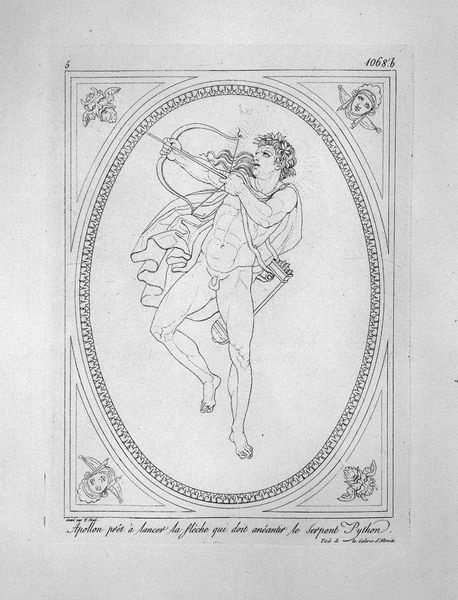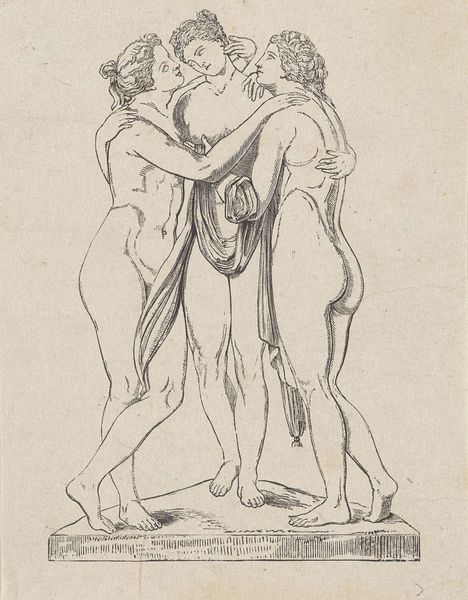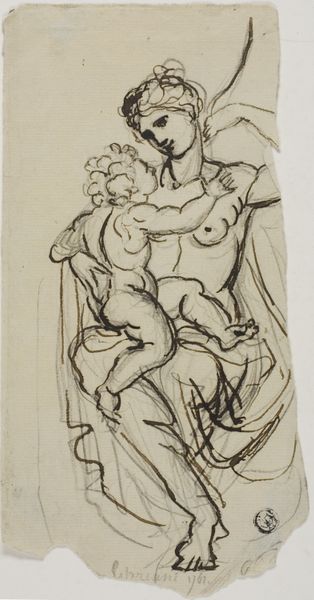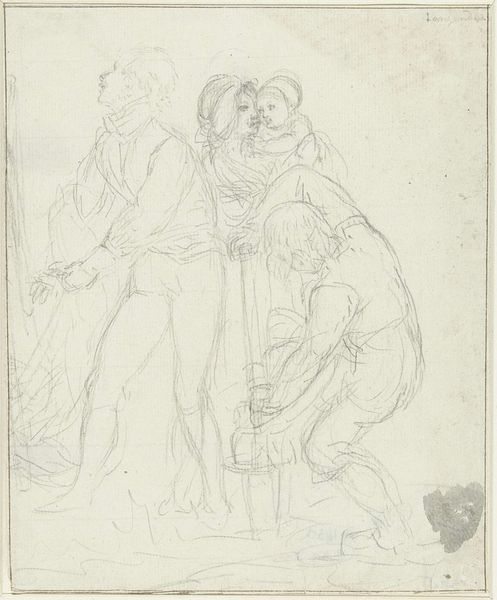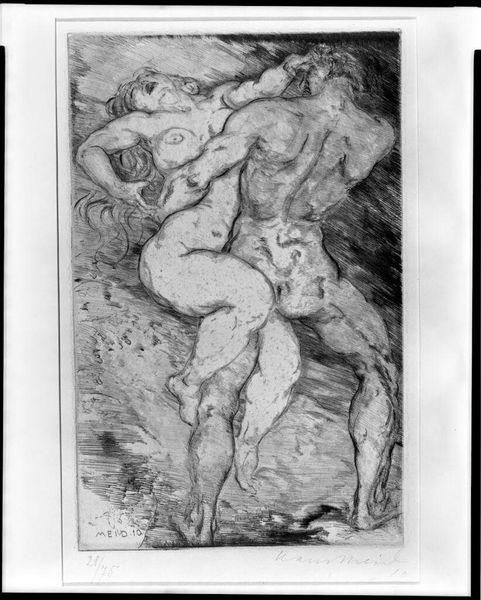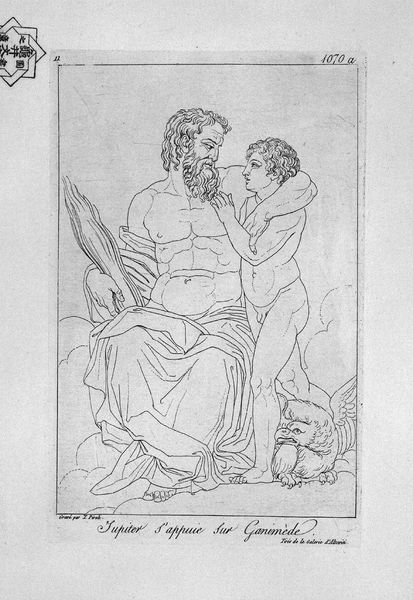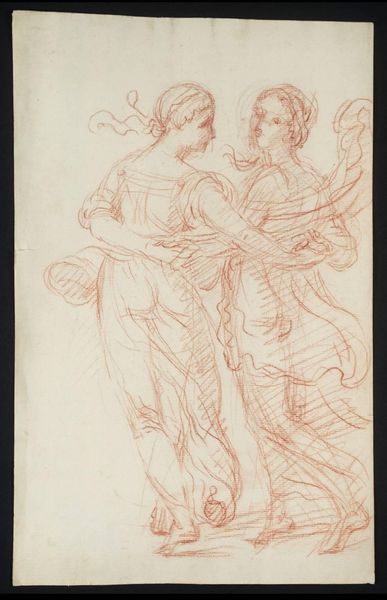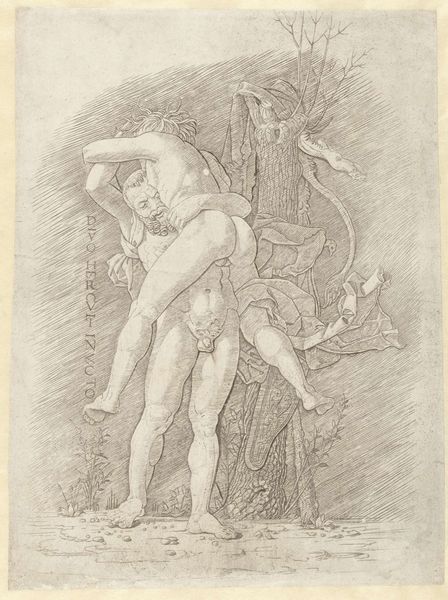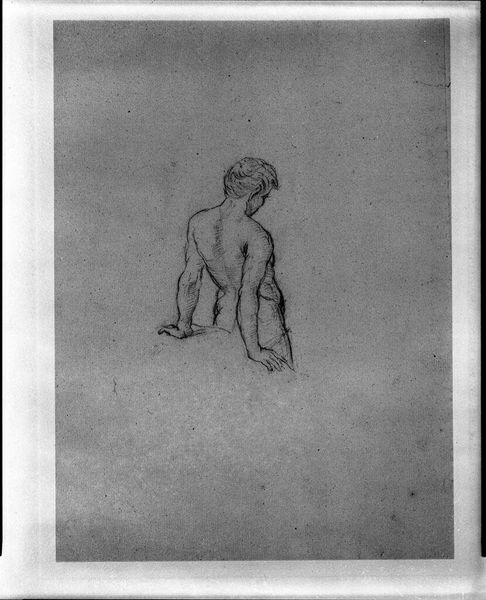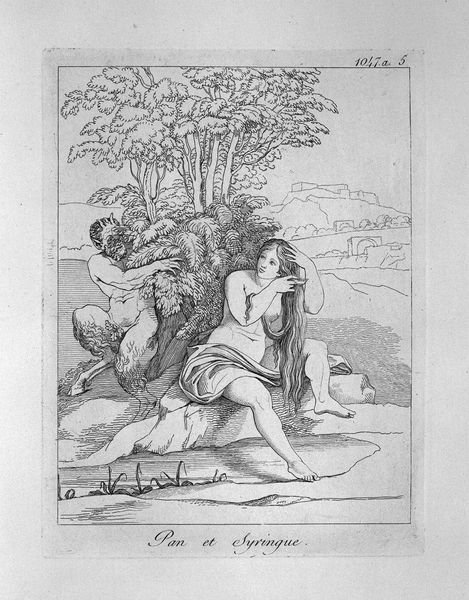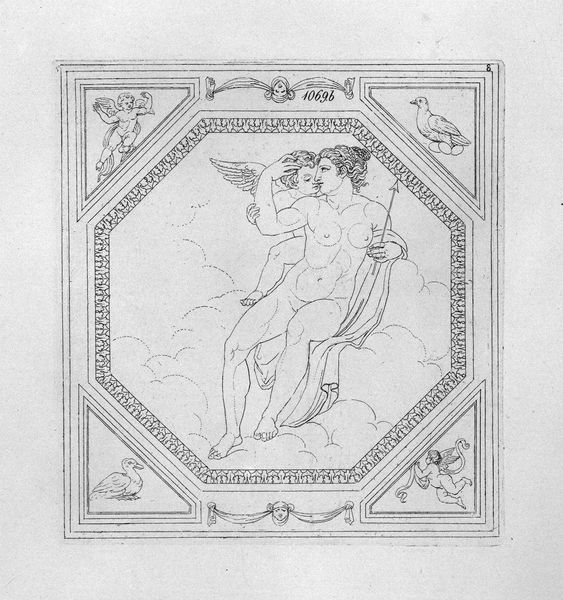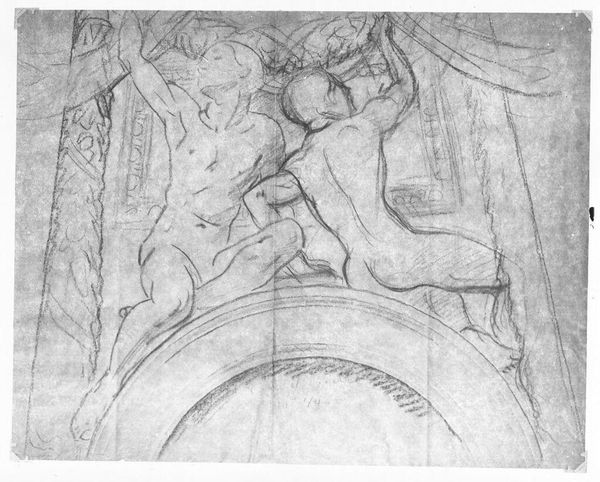
drawing, print, etching, engraving
#
portrait
#
drawing
#
baroque
# print
#
etching
#
classical-realism
#
figuration
#
form
#
roman-mythology
#
mythology
#
line
#
history-painting
#
nude
#
engraving
Copyright: Public domain
Curator: Looking at this print, the interlocking forms immediately strike me. Editor: Agreed, it is fascinating. What we have here is "Neptune and Thetis," made by Giovanni Battista Piranesi. The piece is an etching. Curator: I find the composition remarkable, in that it reflects the broader cultural fascination with classical mythology during the Baroque period, although the execution leans toward classical realism. Editor: The execution speaks volumes to Piranesi's mastery of the etching process. Notice how the stark lines define the figures, creating depth through density of strokes rather than shading. It's essentially all line work. It focuses our attention on the sheer physical presence and intertwining of the god and goddess. It feels decidedly like a print in process. Curator: Certainly, that strong linearity aligns it with the broader engraving tradition and underscores how these images circulated widely, shaping public understanding of mythological narratives. This would've been relatively inexpensive, in terms of production. It is accessible to wider audience. The depiction also feels intimate; the god of the sea, locked in a tender embrace. Editor: Intimate but idealized. Thetis is depicted as a nude. The portrayal underscores power dynamics through the display of the bodies. While the subject matter is mythology, the very labor and craft that go into producing prints—particularly etchings of this caliber—hint at the complexities behind the artistic decisions. Who commissions and funds these projects also directs this medium's presence in public life. Curator: Indeed, considering patronage and the market for such prints offers insights into the sociopolitical climate of the time. Did the imagery further consolidate power, or did it offer a space for negotiation of cultural values through form and figuration? The prevalence of classical themes also reveals much about the tastes and education of the elite during this period. Editor: For me, I always return to process, to how material constraints and technical skills shape artistic choices and social reception. It goes beyond simple dissemination, because the prints reflect both intention and the complex web of factors shaping artistic practice. Curator: I concede that looking closely at the medium and materials gives us great information on what messages would've been interpreted. Editor: By looking closely at this etching and all these prints, we start understanding the role played by materiality and circulation of visual media.
Comments
No comments
Be the first to comment and join the conversation on the ultimate creative platform.

